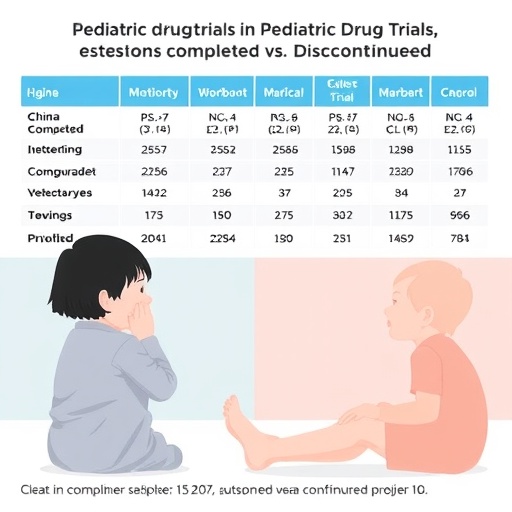Recent research probing the complexities of attention deficit hyperactivity disorder (ADHD) has challenged the common notion that altering school schedules can enhance academic success for all students. While afternoon classes have been broadly celebrated for aligning more closely with the biological rhythms of many children and adolescents—thereby improving cognitive function and academic outcomes—this presumed benefit does not extend to students grappling with ADHD. A groundbreaking study involving a large Brazilian cohort reveals that shifting school attendance from morning to afternoon sessions does not yield significant improvements in learning performance for those exhibiting ADHD or its associated symptoms.
Drawing upon an extensive sample of 2,240 Brazilian students aged six to fourteen, researchers conducted a multifaceted evaluation encompassing literacy skills such as reading and writing, incidences of disciplinary actions including suspensions, grade repetitions, school dropouts, and the prevalence of ADHD symptoms. Spanning a comprehensive three-year observational window, the study meticulously dissected longitudinal and cross-sectional data to interrogate the potential interaction between time-of-day educational exposure and cognitive-behavioral manifestations of ADHD.
The data decisively undermines the hypothesis that scheduling students with ADHD into afternoon shifts aligns their neurobiological functioning with enhanced school performance. Maurício Scopel Hoffmann, a leading neuropsychiatrist from the Federal University of Santa Maria and principal investigator in the study, articulates that “the difficulties experienced by children with ADHD appear invariant to school shift modifications, indicating a plateau or ‘ceiling effect’ in academic improvements tied to such interventions.” This suggests that ADHD’s neurodevelopmental impact transcends circadian aligning strategies that may benefit neurotypical learners.
Intriguingly, the study delineated a stark contrast in outcomes between students with minimal or no ADHD symptoms and their counterparts manifesting the condition. Among students without significant ADHD traits, afternoon classes were consistently correlated with superior academic metrics, highlighting the nuanced influence of chronobiology on learning. Conversely, while morning shifts universally yielded lower academic performance, they did not disproportionately exacerbate challenges in students with marked attentional impairments, further emphasizing the differential impact of school timing across neurodivergent populations.
Globally, ADHD is acknowledged as a pervasive neurodevelopmental disorder, with Brazilian health authorities estimating that approximately 7.6% of children carry this diagnosis. Characterized chiefly by deficits in attention regulation, hyperactivity, and impulsivity, ADHD commonly impedes the acquisition of foundational academic skills—particularly in reading, writing, and arithmetic. These deficits often manifest as slower learning rates, posing formidable hurdles within traditional educational frameworks.
Hoffmann emphasizes that non-pharmacological strategies must be carefully tailored to surmount these challenges. Without effective intervention, children with untreated ADHD not only struggle academically but are also vulnerable to cumulative adversities—ranging from heightened injury risk to social isolation and escalating emotional disorders such as anxiety and depression. He cautions that relying solely on school shift changes represents an insufficient measure, underscoring the urgency for comprehensive, evidence-based approaches that address the multifaceted needs of this population.
Further elaborating, the study provides a critical reassessment of prevalent educational policies that might presume circadian synchronization as a panacea for neurodevelopmental disparities. It accentuates the necessity to differentiate pedagogical strategies that accommodate individualized neurocognitive profiles rather than employing broad, one-size-fits-all scheduling reforms. The absence of measurable academic gains among ADHD-affected students through shift adjustments signals a pressing need for more nuanced interventions integrating psychological, behavioral, and pharmacological dimensions.
Moreover, these findings resonate with broader theoretical frameworks in cognitive neuroscience, which posit that attentional networks dysregulated in ADHD involve complex interactions beyond mere chronotype synchronization. The neurobiological substrates of ADHD—encompassing frontostriatal circuits and dopaminergic signaling—may diminish responsiveness to external temporal modulations of the learning environment. Consequently, educational modifications must engage with these intrinsic neurophysiological dynamics to effectively mitigate the disorder’s academic repercussions.
In practical terms, the study compels stakeholders—educators, clinicians, policymakers—to recalibrate expectations surrounding non-traditional school timings as standalone remedies. Rather, comprehensive support systems incorporating diagnostic assessments, individualized learning plans, therapeutic interventions, and family involvement are indispensable in fostering meaningful academic engagement and progression. This paradigm shift is pivotal in breaking the cyclical pattern of underachievement and social marginalization often observed in youths with ADHD.
The importance of early identification and sustained support gains further prominence given the potential longitudinal trajectory outlined by the research. Children with persistent inattentiveness and hyperactivity face compounding social and psychological consequences if their academic challenges remain unaddressed. The interplay between chronic school difficulties and emerging mood disorders elucidates the essential role of proactive, multifactorial strategies in mitigating long-term adverse outcomes and enhancing quality of life.
This study’s comprehensive design and robust dataset afford a compelling contribution to the global discourse on ADHD management within educational contexts. By systematically disentangling the effects of school shift on diverse cognitive profiles, the research privileges empirical precision over anecdotal assumptions, thus charting a clearer course for evidence-based educational reforms tailored to neurodiverse learners.
Subject of Research: The interplay between ADHD and school shift on educational outcomes in children and adolescents
Article Title: The interplay between ADHD and school shift on educational outcomes in children and adolescents: a cross-sectional and longitudinal analysis
News Publication Date: 29-May-2025
Web References:
https://link.springer.com/article/10.1007/s00787-025-02758-x
http://osf.io/ktz5h/wiki/Study%20Design/
https://bv.fapesp.br/en/auxilios/109297
References:
Hoffmann, M.S., et al. (2025). The interplay between ADHD and school shift on educational outcomes in children and adolescents: a cross-sectional and longitudinal analysis. European Child & Adolescent Psychiatry. DOI: 10.1007/s00787-025-02758-x
Image Credits: Tomaz Silva/Agência Brasil
Keywords: Attention deficit disorder, children, education, mental health, psychiatric disorders, adolescents
Tags: academic outcomes for ADHD studentsADHD and school performanceattention deficit hyperactivity disorder researchBrazilian study on ADHDcognitive function in studentseffects of school shift changesinterventions for students with attention difficultiesliteracy skills and ADHDlongitudinal studies on ADHDneurobiological rhythms and educationschool attendance and academic successschool scheduling impact on learning





